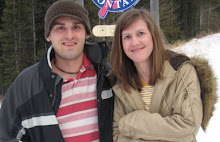-Esotaric- inside information
-Memory Losi-memory by location
1). an unfrequented church
2). usually formed in quiet places
3). 1rst part of memory
- Cicero could repeat 200 law cannons and speaches alone!
-image is the second part of memory
-Primary orality - oral situations primarily
1). no books, no written language, rely on spoken word and memorization
-1rst rule of memory- have a memory teacher like Prospero in Shakespears The Tempest
- learn our class for example
1). Kate Bedoin and her beautiful eyes or Tia and his funny story
-Meme- comprises a unit or element of cultural ideas, symbols or practices; such units or elements transmit from one mind to another through speech, gestures, rituals, or other imitable phenomena. The etymology of the term relates to the Greek word mimema for mimic.[1] Memes act as cultural analogues to genes in that they self-replicate and respond to selective pressures.[2]
Richard Dawkins coined the word "meme" as a neologism in his book The Selfish Gene (1976) to describe how one might extend evolutionary principles to explain the spread of ideas and cultural phenomena. He gave as examples melodies, catch-phrases, and beliefs (notably religious belief), clothing/fashion, and the technology of building arches.[3]
Meme-theorists contend that memes evolve by natural selection (in a manner similar to that of biological evolution) through the processes of variation, mutation, competition, and inheritance influencing an individual entity's reproductive success. Memes spread through the behaviors that they generate in their hosts. Memes that propagate less prolifically may become extinct, while others may survive, spread, and (for better or for worse) mutate. Theorists point out that memes which replicate the most effectively spread best, and some memes may replicate effectively even when they prove detrimental to the welfare of their hosts.[4]
A field of study called memetics arose in the 1990s exploring the concepts and transmission of memes in terms of an evolutionary model. Criticism from a variety of fronts has challenged the notion that scholarship can examine memes empirically. Some commentators question the idea that one can meaningfully categorize culture in terms of discrete units (from wikipedia).
-muses and specialities from http://ancienthistory.about.com/od/mgodsandgoddesses/tp/Muses.htm: (pictures at this link)
1). At one time, the Muses were the goddesses of inspiring springs, but they became the representatives of poetry, the arts and science and sources of inspiration. Homer refers to them as one Muse and as many Muses, living on Olympus. Hesiod refers to them as 9 daughters of Zeus and Mnemosyne, who were born in Pieria.
1. Calliope
Clipart.com
Provenance: Muse of Epic Song
Attribute: Wax Tablet
zSB(3,3)
Sponsored Links
Greek MusesLooking for Greek Muses? Find exactly what you want today.Yahoo.com
Greek Goddess QuizWhich Greek Goddess Are You? Browse Our Fun Quizzes Now!LifeScript.com
The YouTube OrchestraBe part of a new international symphony orchestra - Learn more.youtube.com/symphony
2. Clio
Clipart.com
Provenance: Muse of history
Attribute: Scroll
3. Euterpe
Clipart.com
Provenance: Muse of lyric song
Attribute: Double flute
4. Melpomene
Clipart.com
Provenance: Muse of tragedy
Attribute: Tragic mask, ivy wreath
5. Terpsichore
Clipart.com
Provenance: Muse of dance
Attribute: Lyre
6. Erato
Clipart.com
Provenance: Muse of erotic poetry
Attribute: Smaller lyre
7. Polyhymnia
Clipart.com
Provenance: Muse of sacred song
Attribute: Depicted veiled and pensive
8. Urania
Clipart.com
Provenance: Muse of astronomy
Attribute: Celestial globe
-pnemonics- memory
-Written language and print is only a few thousand years old!
-Walter Ong "in oral traditions, when you speak it, its gone
1).effemeral(spelling?)- write it down so it isn't gone with the wind
-The oddessuy
1). Penelope and Odiseus engaged in the most erotic act....story telling. Athena extended the night to allow them to do this!
Friday, January 16, 2009
Subscribe to:
Post Comments (Atom)

No comments:
Post a Comment